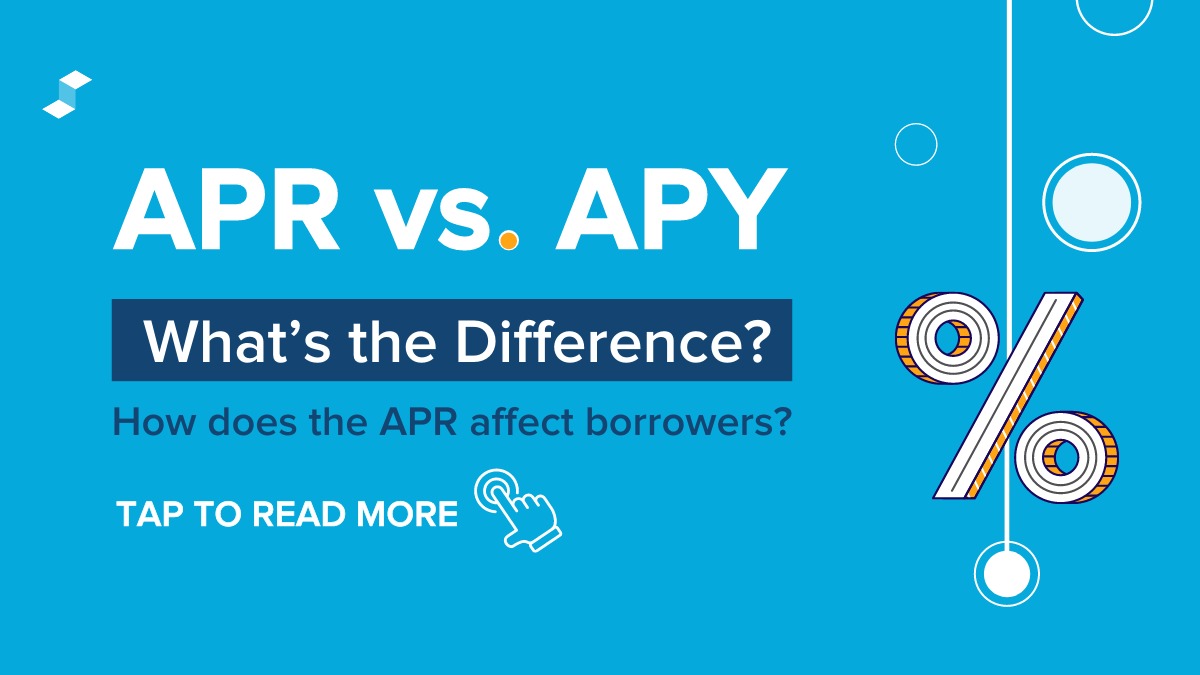Home>Finance>What Explains The Difference Between Retail And Commercial Banking


Finance
What Explains The Difference Between Retail And Commercial Banking
Modified: December 30, 2023
Discover the key factors that differentiate retail and commercial banking, with a focus on finance. Explore the nuances of banking in this informative guide.
(Many of the links in this article redirect to a specific reviewed product. Your purchase of these products through affiliate links helps to generate commission for LiveWell, at no extra cost. Learn more)
Table of Contents
- Introduction
- Overview of Retail Banking
- Overview of Commercial Banking
- Key Differences between Retail and Commercial Banking
- Products and Services Offered by Retail Banks
- Products and Services Offered by Commercial Banks
- Target Customers for Retail Banking
- Target Customers for Commercial Banking
- Risk Factors in Retail Banking
- Risk Factors in Commercial Banking
- Regulation and Supervision of Retail Banking
- Regulation and Supervision of Commercial Banking
- Conclusion
Introduction
Welcome to the world of banking, where financial institutions play a vital role in the economy by providing various services and products to individuals and businesses. Within the banking sector, there are two main categories: retail banking and commercial banking. While both types of banking serve the fundamental purpose of providing financial services, there are key differences that set them apart.
Retail banking primarily caters to individual customers, offering a wide range of services such as savings and checking accounts, mortgages, personal loans, credit cards, and other consumer-oriented financial products. On the other hand, commercial banking focuses on serving businesses, including small and medium-sized enterprises (SMEs), large corporations, and even governments. Commercial banks offer services like business loans, trade financing, cash management, and investment banking.
In this article, we will explore the differences between retail banking and commercial banking, shedding light on their distinct features, functions, and targeted customer segments. We will also delve into the risk factors and regulatory frameworks that govern these two sectors. By understanding the unique characteristics of retail and commercial banking, you can make informed decisions when it comes to managing your personal finances or running a business.
Overview of Retail Banking
Retail banking, also known as consumer banking, focuses on providing financial services to individual customers. It is the most common form of banking that most people are familiar with. Retail banks are widespread and easily accessible, with branches located in various neighborhoods and often offering online banking platforms for convenience.
The primary goal of retail banking is to cater to the everyday financial needs of individuals, helping them manage their money, save for the future, and meet their personal financial goals. These banks offer a wide array of products and services tailored to the needs of individual customers, including:
- Checking and Savings Accounts: Retail banks provide individuals with the opportunity to open checking accounts for day-to-day transactions and savings accounts to earn interest on their deposits.
- Credit Cards: Retail banks issue credit cards that allow customers to make purchases on credit and pay off the balance over time.
- Personal Loans: Retail banks offer personal loans, which can be used for various purposes such as financing education, home renovations, or covering unexpected expenses.
- Mortgages: Retail banks provide mortgage loans to individuals who wish to buy or refinance a home.
- Auto Loans: Retail banks offer financing options for purchasing vehicles, allowing individuals to pay for their cars in installments.
- Insurance Products: Retail banks often provide insurance products such as life insurance, health insurance, and property insurance to help individuals protect themselves and their assets.
- Investment Services: Some retail banks have investment divisions that offer products such as mutual funds, retirement accounts, and brokerage services.
In addition to these services, retail banks also provide convenient features such as online and mobile banking, ATM networks, and customer support for account-related inquiries and transactions. This accessibility and customer-centric approach make retail banking an integral part of everyday life for individuals.
Overview of Commercial Banking
Commercial banking focuses on providing financial services to businesses, including small and medium-sized enterprises (SMEs), large corporations, and even government entities. Unlike retail banking, which targets individuals, commercial banking is centered around meeting the unique financial needs of organizations and facilitating their growth and operations.
Commercial banks offer a wide range of products and services specifically designed for businesses, including:
- Business Loans: Commercial banks provide loans to businesses for various purposes, such as expansion, working capital, equipment purchase, or project financing.
- Trade Financing: Commercial banks facilitate international trade by offering letters of credit, export/import financing, and other trade-related services to help businesses conduct transactions with partners around the world.
- Cash Management: Commercial banks provide cash management solutions to help businesses efficiently manage their cash flows, pursue liquidity management, and streamline their payment processes.
- Corporate Banking: Banks offer tailored banking services to corporations, which may include treasury management, foreign exchange services, corporate advisory, and investment banking.
- Merchant Services: Commercial banks provide businesses with merchant services to accept electronic payments, process credit card transactions, and manage point-of-sale systems.
- Asset Management: Some commercial banks have asset management divisions that offer investment and wealth management services to businesses, helping them grow and maximize their financial resources.
Commercial banking also involves more complex financial transactions such as mergers and acquisitions, initial public offerings (IPOs), corporate lending syndications, and underwriting services. These services cater to the strategic and capital needs of larger corporations.
Commercial banks play a vital role in supporting the growth and stability of businesses. By providing access to capital, financial expertise, and risk management solutions, they contribute to economic development, job creation, and industry expansion. The relationship between commercial banks and businesses often extends beyond financial transactions, with banks acting as trusted advisors and partners in the long-term success of their clients.
Key Differences between Retail and Commercial Banking
While both retail banking and commercial banking fall under the broader umbrella of banking services, they have some fundamental differences that set them apart. Understanding these distinctions can help individuals and businesses make informed decisions about their banking needs. Here are the key differences between retail banking and commercial banking:
- Target Customers: The primary difference lies in the target customer base. Retail banking focuses on serving individual customers and meeting their personal financial needs, while commercial banking is geared towards businesses of all sizes, including SMEs, large corporations, and government entities.
- Products and Services: Retail banking provides a wide range of consumer-oriented financial products and services, including checking and savings accounts, credit cards, personal loans, mortgages, and insurance. On the other hand, commercial banking offers tailored services for businesses, such as business loans, trade financing, cash management, and asset management.
- Transaction Size and Complexity: Retail banking transactions are generally smaller and less complex, focusing on individual account management, consumer loans, and retail investment products. In contrast, commercial banking deals with larger transaction sizes, complex financial structures, and specialized services required by businesses, such as corporate lending syndications and underwriting of securities.
- Risk Assessment: Retail banking involves assessing the creditworthiness of individual customers based on personal credit history and income stability. Commercial banking evaluates businesses’ financial health, industry trends, and risk management practices to determine creditworthiness and loan terms.
- Regulatory Environment: Retail banking is subject to regulatory oversight to ensure consumer protection, fair banking practices, and transparency. Commercial banking operates within a robust regulatory framework that includes capital requirements, risk management guidelines, and supervision aimed at maintaining financial stability and managing the risks associated with large-scale transactions and corporate clients.
- Relationships and Support: Retail banking often focuses on building long-term customer relationships, with personal bankers providing assistance and advice on individual financial goals. Commercial banking emphasizes personalized relationship management, offering dedicated relationship managers who understand the specific needs and goals of businesses and provide tailored solutions.
These differences highlight how retail banking and commercial banking have distinct roles and serve different customer segments. While they share the core purpose of providing financial services, their offerings, risk profiles, and regulatory environments vary to cater to the unique needs of individuals and businesses.
Products and Services Offered by Retail Banks
Retail banks offer a wide range of products and services tailored to meet the financial needs of individual customers. These services are designed to provide convenience, accessibility, and support in managing personal finances. Here are some of the key products and services typically offered by retail banks:
- Checking and Savings Accounts: Retail banks provide individuals with the opportunity to open checking accounts for day-to-day transactions and savings accounts to earn interest on their deposits.
- Credit Cards: Retail banks issue credit cards that allow customers to make purchases on credit and pay off the balance over time. Credit cards may come with benefits such as cashback rewards, travel points, or exclusive discounts.
- Personal Loans: Retail banks offer personal loans, which can be used for various purposes such as financing education, home renovations, or covering unexpected expenses. These loans typically come with fixed interest rates and repayment terms.
- Mortgages: Retail banks provide mortgage loans to individuals who wish to buy or refinance a home. Mortgages come with different types of interest rates, such as fixed-rate or adjustable-rate mortgages, and offer long-term repayment options.
- Auto Loans: Retail banks offer financing options for purchasing vehicles, allowing individuals to pay for their cars in installments. Auto loans come with varying interest rates and terms based on the borrower’s creditworthiness and the value of the vehicle.
- Insurance Products: Retail banks often provide insurance products such as life insurance, health insurance, and property insurance to help individuals protect themselves and their assets. These insurance products offer financial security and peace of mind in case of unexpected events or emergencies.
- Investment Services: Some retail banks have investment divisions that offer products such as mutual funds, retirement accounts, and brokerage services. These services cater to individuals who wish to grow their wealth and pursue their long-term financial goals.
- Online and Mobile Banking: Retail banks provide convenient online and mobile banking platforms that allow customers to access and manage their accounts anytime, anywhere. These platforms enable features such as bill payments, fund transfers, and account monitoring.
- Customer Support: Retail banks offer customer support services to assist with account-related inquiries, transaction issues, and general banking assistance. This support can be provided through phone, email, live chat, or in-person at bank branches.
These products and services offered by retail banks are designed to cater to the diverse financial needs of individuals, helping them manage their money, make purchases, borrow for various purposes, and plan for their future financial well-being.
Products and Services Offered by Commercial Banks
Commercial banks offer a range of specialized products and services tailored to meet the unique financial needs of businesses, including small and medium-sized enterprises (SMEs), large corporations, and government entities. These services are designed to support the growth, operations, and financial management of businesses. Here are some of the key products and services typically offered by commercial banks:
- Business Loans: Commercial banks provide various types of business loans to support the financing needs of businesses. These loans may include term loans, lines of credit, equipment financing, and working capital loans.
- Trade Financing: Commercial banks facilitate international trade by offering letters of credit, export/import financing, and other trade-related services. This enables businesses to engage in global transactions and manage the associated risks.
- Cash Management: Commercial banks provide comprehensive cash management solutions to help businesses effectively manage their cash flows, handle payments and collections, and optimize working capital. This includes services such as electronic funds transfers, payroll management, and cash flow forecasting.
- Corporate Banking: Commercial banks offer specialized banking services to corporations, which may include treasury management, foreign exchange services, corporate advisory, and investment banking. These services cater to the unique financial needs and strategic goals of larger corporations.
- Merchant Services: Commercial banks provide businesses with merchant services to accept electronic payments, process credit card transactions, and manage point-of-sale systems. These services enable businesses to facilitate smooth and secure payment transactions with their customers.
- Asset Management: Some commercial banks have asset management divisions that offer investment and wealth management services to businesses, helping them grow and maximize their financial resources. These services may include portfolio management, retirement planning, and customized investment solutions.
- Treasury Services: Commercial banks provide a range of treasury services to help businesses manage financial risks, optimize liquidity, and enhance efficiency in treasury operations. This may include cash pooling, foreign exchange risk management, interest rate hedging, and trade finance solutions.
- Corporate Finance: Commercial banks assist businesses with corporate finance needs, such as mergers and acquisitions, initial public offerings (IPOs), debt restructuring, and raising capital through equity or debt markets. These services aim to support businesses in their strategic growth initiatives and capital requirements.
Commercial banks play a crucial role in supporting the financial needs and growth of businesses. Through their extensive product offerings, specialized expertise, and tailored solutions, commercial banks provide valuable support to businesses in managing their finances, pursuing strategic goals, and navigating the ever-changing dynamics of the business world.
Target Customers for Retail Banking
Retail banking primarily caters to individual customers, targeting a broad range of individuals from different demographic segments. Retail banks focus on providing financial products and services that meet the everyday banking needs of individuals, helping them manage their personal finances and achieve their financial goals. Here are the key target customers for retail banking:
- Individuals: Retail banks cater to individuals seeking personal banking services. This includes people from all walks of life, such as employees, self-employed individuals, students, retirees, and homemakers.
- Salaried Employees: Retail banks often focus on individuals who receive a regular income through employment. They offer services like salary accounts, direct deposit, and convenient banking options to facilitate smooth financial transactions for this customer group.
- Small Business Owners: Retail banks also serve small business owners and entrepreneurs who require basic banking services for their business transactions. These customers may need services such as business checking accounts, business credit cards, and business loans.
- Young Professionals: Retail banks target young professionals who are starting their careers and building their financial foundation. They provide products and services that cater to the specific needs of this customer segment, such as student loans, credit cards, and financial planning tools.
- Families: Retail banks attract families by offering services that help manage household finances. This includes joint accounts, mortgages for home purchases, personal loans for family expenses, and educational savings accounts for children’s education.
- Retail Investors: Retail banks cater to individuals looking to invest their savings and generate returns. They offer investment products such as mutual funds, individual retirement accounts (IRAs), certificates of deposit (CDs), and brokerage services to support their investment goals.
- Elderly Customers: Retail banks also serve senior citizens and retirees, offering them specialized services like senior-friendly banking options, retirement accounts, and insurance products specifically designed to meet their unique financial needs.
Retail banks recognize the diverse needs and financial goals of their target customers. They aim to create a customer-centric environment by providing accessible banking services, personalized assistance, and technological innovations to enhance the banking experience for individuals of all backgrounds and life stages.
Target Customers for Commercial Banking
Commercial banking primarily targets businesses of all sizes, including small and medium-sized enterprises (SMEs), large corporations, and government entities. These institutions require specialized financial services to facilitate their operations, manage their finances, and pursue their strategic objectives. Here are the key target customers for commercial banking:
- Small and Medium-sized Enterprises (SMEs): Commercial banks focus on serving SMEs, which are the backbone of many economies. SMEs often require financial assistance such as business loans, trade financing, and cash management services to support their growth and day-to-day operations.
- Large Corporations: Commercial banks target large corporations that have complex financial needs. These companies require specialized financial services, including treasury management, foreign exchange services, risk management, and investment banking solutions.
- Government Entities: Commercial banks also serve government entities such as municipalities, government agencies, and public institutions. These customers may require specialized services like public sector financing, treasury services, and government contract banking.
- Startups and Entrepreneurial Ventures: Commercial banks target startups and entrepreneurial ventures that require financial assistance and banking solutions to support their business growth and expansion plans. These customers may need business loans, capital investment services, and commercial banking support tailored to their unique needs.
- Real Estate Developers: Commercial banks cater to real estate developers by providing financing options for construction projects, property development, and real estate investments. These customers may require lines of credit, project financing, and advisory services to support their ventures.
- Professional Service Firms: Commercial banks target professional service firms, such as law firms, engineering companies, and consulting firms. These customers often require working capital loans, cash management services, and specialized banking solutions to meet their unique financial needs.
- Manufacturers and Distributors: Commercial banks serve manufacturers and distributors by providing trade financing, working capital lines of credit, and supply chain financing solutions. These customers require financial support in managing their inventory, improving cash flow, and expanding their distribution networks.
- International Businesses: Commercial banks target businesses engaged in international trade or expanding into global markets. These customers require trade financing, foreign exchange services, and other cross-border banking solutions to facilitate their international transactions and manage currency risks.
Commercial banks understand the specific financial requirements of businesses and offer a range of products and services tailored to their needs. By providing specialized expertise, industry-specific solutions, and personalized support, commercial banks play a vital role in enabling businesses to thrive, grow, and accomplish their strategic objectives.
Risk Factors in Retail Banking
As with any financial sector, retail banking is not without its share of risk factors that both customers and banks need to be aware of. These risk factors can impact the stability and profitability of retail banks. Understanding these risks is crucial for effective risk management and ensuring the safety of customer deposits. Here are some of the key risk factors in retail banking:
- Credit Risk: Credit risk is a significant risk factor in retail banking. It refers to the potential for customers to default on their loan repayments, resulting in financial losses for the bank. Banks assess credit risk through creditworthiness checks, credit scoring models, and collateral evaluation.
- Interest Rate Risk: Retail banks are exposed to interest rate risk due to the nature of their lending and deposit activities. Changes in interest rates can impact the profitability of banks by affecting the spread between loan interest income and deposit interest expense.
- Liquidity Risk: Liquidity risk arises when a bank faces difficulty in meeting its short-term obligations. In retail banking, sudden large-scale withdrawals or unforeseen changes in deposit patterns can strain the bank’s liquidity position. Banks manage liquidity risk through careful cash flow management and maintaining sufficient reserves.
- Operational Risk: Operational risk encompasses a wide range of risks arising from internal processes, systems, and human error. In retail banking, operational risk can arise from compliance failures, technology glitches, fraud, or inadequate internal controls.
- Regulatory and Compliance Risk: Retail banks operate in a highly regulated environment, and non-compliance with applicable laws and regulations can result in financial penalties and reputational damage. Banks need to ensure robust compliance measures to mitigate regulatory and compliance risk.
- Cybersecurity Risk: As technology becomes more pervasive in retail banking, cybersecurity risk is a growing concern. Banks need to safeguard customer data and protect their systems from cyber threats, such as hacking, data breaches, and identity theft.
- Market Risk: Market risk arises from fluctuations in financial markets, such as interest rates, foreign exchange rates, and equity prices. Retail banks may be exposed to market risk due to their investment portfolios, foreign exchange transactions, and derivatives activities.
- Reputation Risk: Reputation risk is the potential damage to a bank’s reputation due to actions or events that negatively impact customer trust and confidence. Retail banks need to maintain a strong reputation by providing quality services, transparent practices, and effective customer communication.
Retail banks have risk management frameworks in place to identify, assess, and mitigate these risk factors. These frameworks include credit risk assessments, stress testing, internal controls, compliance monitoring, and cybersecurity measures. By effectively managing these risk factors, retail banks can maintain stability, protect customer deposits, and ensure the long-term sustainability of their operations.
Risk Factors in Commercial Banking
Commercial banking involves a range of risk factors that banks must carefully manage to ensure the stability and profitability of their operations. The unique nature of commercial banking, including large-scale transactions, complex financial structures, and exposure to diverse industries, brings about various risk factors. Here are some of the key risk factors in commercial banking:
- Credit Risk: Credit risk is one of the primary risk factors in commercial banking. It arises from the potential for corporate borrowers to default on their loan obligations. Commercial banks evaluate credit risk by assessing the financial health, repayment capacity, industry trends, and collateral provided by businesses.
- Market Risk: Commercial banks are exposed to market risk due to their involvement in investment activities and trading activities. Fluctuations in interest rates, foreign exchange rates, commodity prices, and equity markets can impact the value of investment portfolios and trading positions of commercial banks.
- Operational Risk: Operational risk refers to the risk of losses arising from inadequate or failed internal processes, systems, or human errors. In commercial banking, operational risk can occur due to technological failures, fraud, errors in transaction processing, and compliance failures.
- Liquidity Risk: Liquidity risk is the potential for commercial banks to face difficulty in meeting their short-term funding requirements. This risk can arise from sudden withdrawals, lack of market liquidity, or unexpected changes in funding patterns. Banks manage liquidity risk through maintaining liquidity buffers and contingency funding plans.
- Interest Rate Risk: Interest rate risk affects commercial banks due to changes in interest rates that can impact the profitability of their interest-sensitive assets and liabilities. Commercial banks must carefully manage interest rate risk to protect their net interest margin and overall profitability.
- Regulatory and Compliance Risk: Commercial banks operate within a highly regulated environment. Non-compliance with regulations and failure to meet regulatory requirements can result in financial penalties, reputational damage, and legal consequences. Banks must closely monitor and adhere to regulatory guidelines.
- Counterparty Risk: Commercial banks face counterparty risk when dealing with other financial institutions, borrowers, or trading counterparties. This risk arises from the potential for the counterparty to default on their obligations, leading to financial losses for the bank.
- Country and Sovereign Risk: Commercial banks with international operations face country and sovereign risk. This risk stems from the economic and political stability of foreign countries where banks operate or have exposure, which can impact the performance of their international activities.
Commercial banks have well-established risk management frameworks and practices to identify, assess, and mitigate these risk factors. This includes credit risk assessments, stress testing, market risk management, operational controls, liquidity management strategies, compliance monitoring, and robust internal controls. By effectively managing these risk factors, commercial banks can safeguard their financial health, protect their shareholders’ interests, and maintain a stable and resilient banking system.
Regulation and Supervision of Retail Banking
Retail banking operates within a regulatory framework designed to ensure consumer protection, maintain financial stability, and promote transparency and fairness in banking practices. Governments and regulatory authorities closely oversee and regulate retail banking activities to safeguard the interests of individual customers. Here are some key aspects of the regulation and supervision of retail banking:
Government and Regulatory Bodies: Government bodies and regulatory authorities, such as central banks and financial regulatory agencies, play a crucial role in overseeing the retail banking sector. They establish and enforce regulations, policies, and guidelines that retail banks must adhere to in their operations.
Consumer Protection: Retail banking regulations aim to protect consumers by ensuring fair treatment, transparency, and responsible lending practices. They require retail banks to provide clear and accurate information about products and services, disclose fees and charges, and adhere to ethical practices in customer interactions.
Prudential Regulation: Prudential regulation focuses on maintaining the financial stability and soundness of retail banks. Regulations set capital requirements, risk management guidelines, and liquidity standards to ensure that banks have the necessary safeguards in place to withstand potential financial shocks and protect depositors’ funds.
Know Your Customer (KYC) and Anti-Money Laundering (AML) Regulations: To prevent financial crimes and protect the integrity of the financial system, retail banks are subject to KYC and AML regulations. These regulations require banks to verify the identity of their customers, monitor transactions for suspicious activities, and report any identified money laundering or terrorist financing activities.
Privacy and Data Protection: Retail banking regulations also address the privacy and protection of customer data. Banks are required to implement secure data storage and handling practices, obtain customer consent for data usage, and comply with applicable privacy laws and regulations.
Compliance Monitoring and Reporting: Regulatory authorities conduct regular monitoring and inspections of retail banks to ensure compliance with applicable regulations. Banks are required to submit periodic reports on their financial condition, risk management practices, and compliance with regulatory requirements.
Deposit Insurance: Many countries have deposit insurance schemes in place to protect individual depositors in the event of a bank failure. These schemes provide a level of assurance to retail bank customers by guaranteeing their deposits up to a certain limit.
Legal and Ethical Conduct: Retail banks are obligated to operate within the legal and ethical frameworks established by regulators. They must adhere to laws and regulations related to fair lending, non-discriminatory practices, and responsible banking conduct.
Regulation and supervision of retail banking help to maintain a stable and secure banking system, protect customer interests, and foster public trust in the financial industry. By ensuring compliance with regulations and promoting ethical conduct, regulators aim to create a level playing field and promote the integrity and credibility of retail banks.
Regulation and Supervision of Commercial Banking
The operation of commercial banks is subject to stringent regulation and supervision to maintain financial stability, protect consumer interests, and mitigate potential risks. Governments and regulatory bodies play a crucial role in overseeing and regulating commercial banking activities. Here are some key aspects of the regulation and supervision of commercial banking:
Financial Regulatory Agencies: Regulatory agencies, such as central banks and financial supervisory authorities, are responsible for overseeing and regulating commercial banks. They establish regulatory frameworks, policies, and guidelines to ensure the safety and soundness of the banking system.
Prudential Regulation: Prudential regulations are designed to strengthen the stability of commercial banks and the entire banking system. These regulations set capital requirements, risk management guidelines, liquidity standards, and stress testing procedures to ensure that banks maintain sufficient resilience to withstand financial shocks.
Market Conduct and Consumer Protection: Commercial banking regulations emphasize fair business practices, consumer protection, and market conduct. Banks are required to provide clear and transparent information to customers, avoid predatory lending practices, treat customers fairly, and disclose terms and conditions of financial products and services.
Financial Reporting and Disclosure: Commercial banks are obliged to maintain accurate and comprehensive financial records and submit periodic reports to regulatory authorities. The reports include information on financial statements, risk exposures, capital adequacy, and compliance with regulatory requirements.
Anti-Money Laundering (AML) and Counter-Terrorism Financing (CTF) Regulations: Commercial banks are subject to AML and CTF regulations to prevent financial crimes, such as money laundering and terrorist financing. Banks need to implement robust customer due diligence measures, transaction monitoring systems, and reporting suspicious activities to regulatory authorities.
Compliance and Risk Management: Compliance with regulatory requirements is a critical aspect of commercial banking. Banks are expected to establish strong internal control systems, risk management frameworks, and compliance functions to ensure adherence to regulations and manage various risks effectively.
Supervision and Oversight: Regulatory authorities conduct ongoing supervision and monitoring of commercial banks to assess their compliance with regulations and mitigate potential risks. Regular examinations, assessments, and audits are conducted to ensure that banks maintain sound banking practices and financial stability.
Resolution and Recovery Frameworks: Regulatory frameworks also establish mechanisms for resolving failing banks and ensuring an orderly resolution process without disrupting financial stability. These frameworks outline procedures for managing distressed banks, protecting depositors, and minimizing systemic risks.
International Cooperation: Given the global nature of commercial banking, regulatory bodies often engage in international cooperation and coordination to address cross-border risks, harmonize regulatory standards, and share information to foster stability in the global banking system.
The regulation and supervision of commercial banking aim to maintain a safe, sound, and resilient banking system. By implementing robust regulatory frameworks and conducting effective supervision, authorities strive to safeguard financial stability, protect customers, and build trust in the commercial banking sector.
Conclusion
Retail banking and commercial banking are two distinct sectors within the banking industry, each catering to specific customer segments and offering tailored products and services. Retail banking focuses on serving individual customers and providing a wide range of consumer-oriented financial products, while commercial banking serves businesses of all sizes and offers specialized services to support their financial needs.
In retail banking, the target customers are individuals, including salaried employees, small business owners, young professionals, and families. Retail banks offer products and services such as checking and savings accounts, credit cards, personal loans, mortgages, and investment services. They prioritize customer relationships, convenience, and accessibility.
Commercial banking, on the other hand, targets businesses, including SMEs, large corporations, and government entities. Commercial banks provide business loans, trade financing, cash management solutions, and investment banking services to support the operations and strategic goals of businesses. They focus on credit analysis, risk management, and industry expertise.
Both retail banking and commercial banking operate within regulatory frameworks and are subject to supervision to ensure consumer protection, financial stability, and adherence to regulatory requirements. Prudential regulations, market conduct regulations, and AML regulations are among the key regulatory aspects governing the operations of both sectors.
Understanding the differences between retail banking and commercial banking is essential for individuals and businesses to make informed financial decisions. Whether managing personal finances or running a company, knowledge of the products, services, risk factors, and regulatory environments of these banking sectors empowers individuals and organizations to navigate the banking landscape effectively.
Overall, retail banking and commercial banking play integral roles in supporting individuals and businesses in their financial endeavors. By providing accessible financial services, managing risks, and adhering to regulatory frameworks, these banking sectors contribute to the stability, growth, and economic development of societies around the world.














